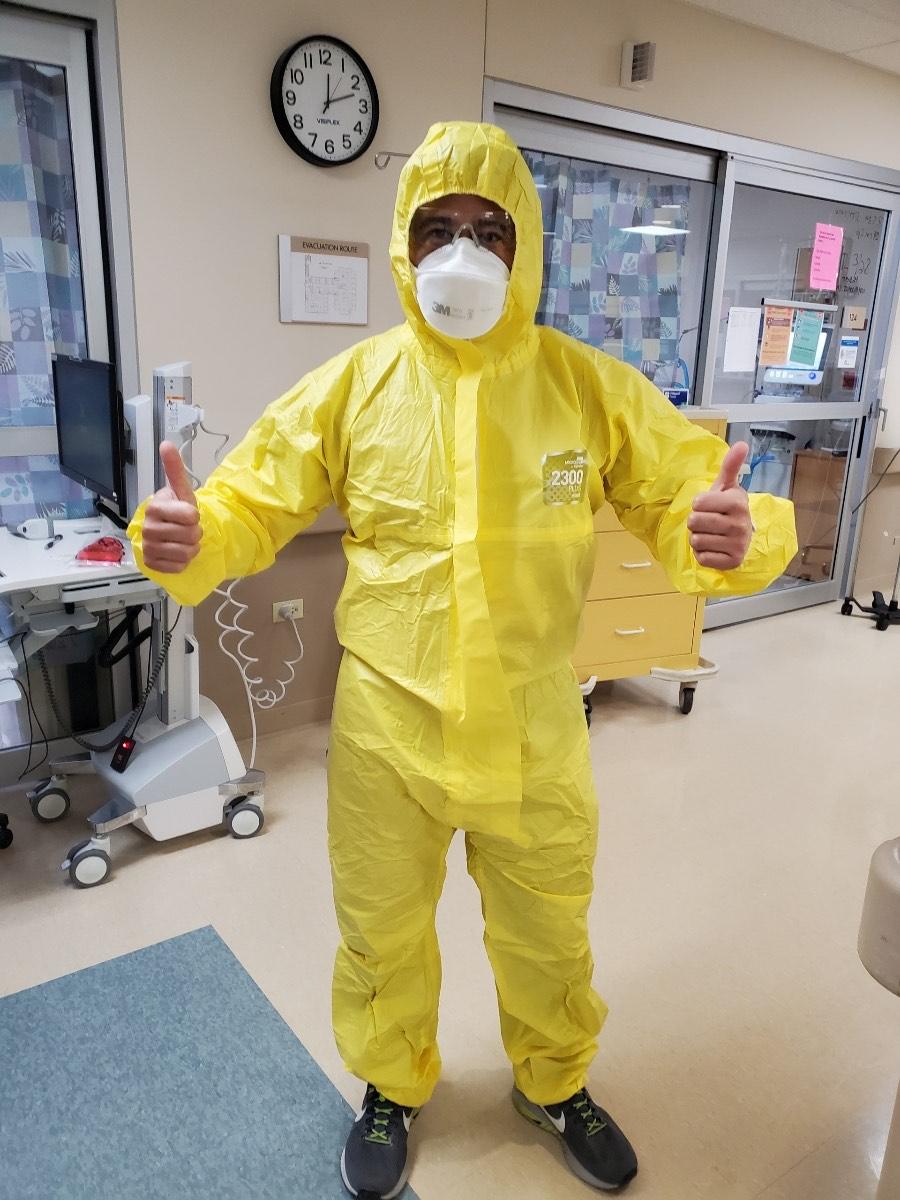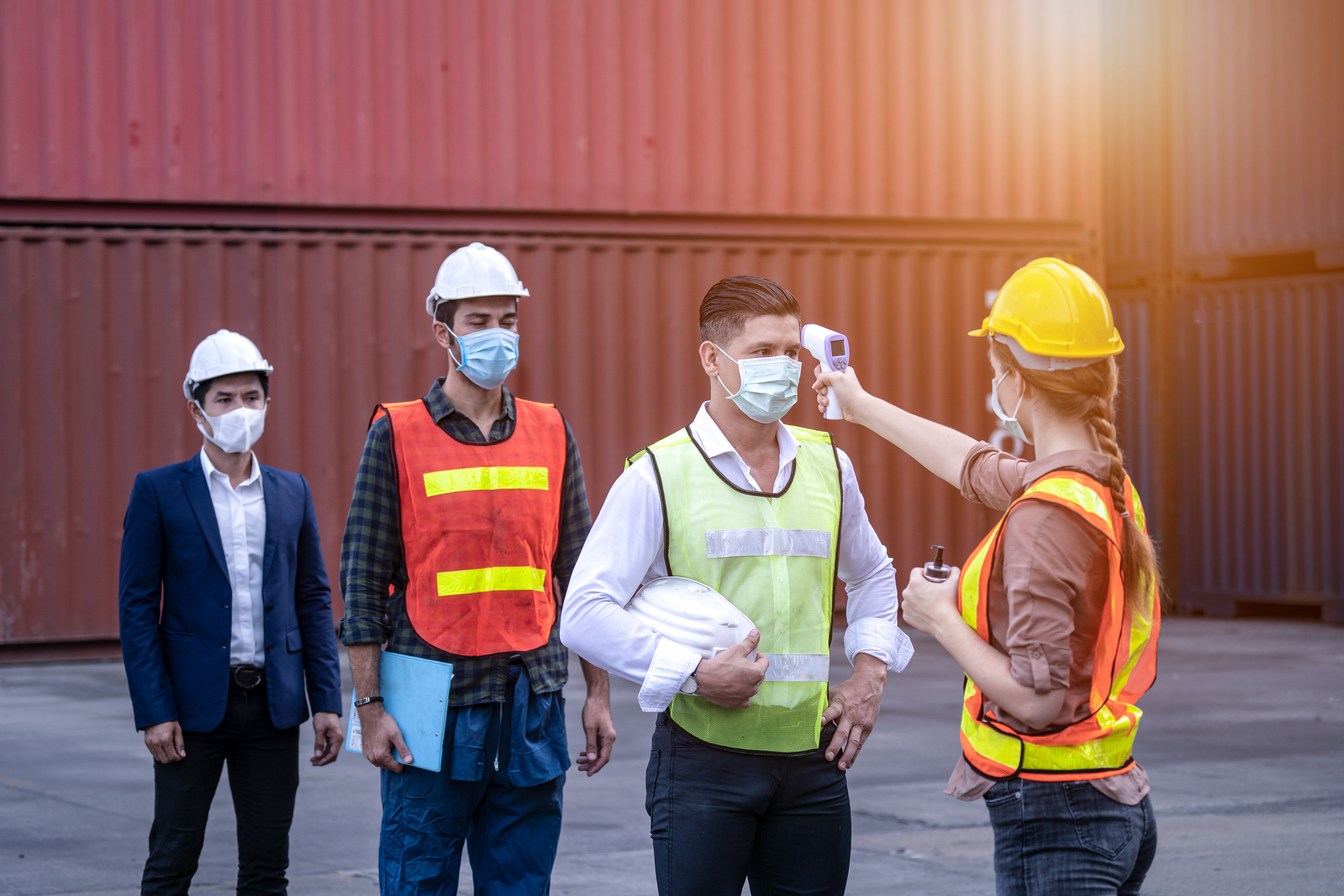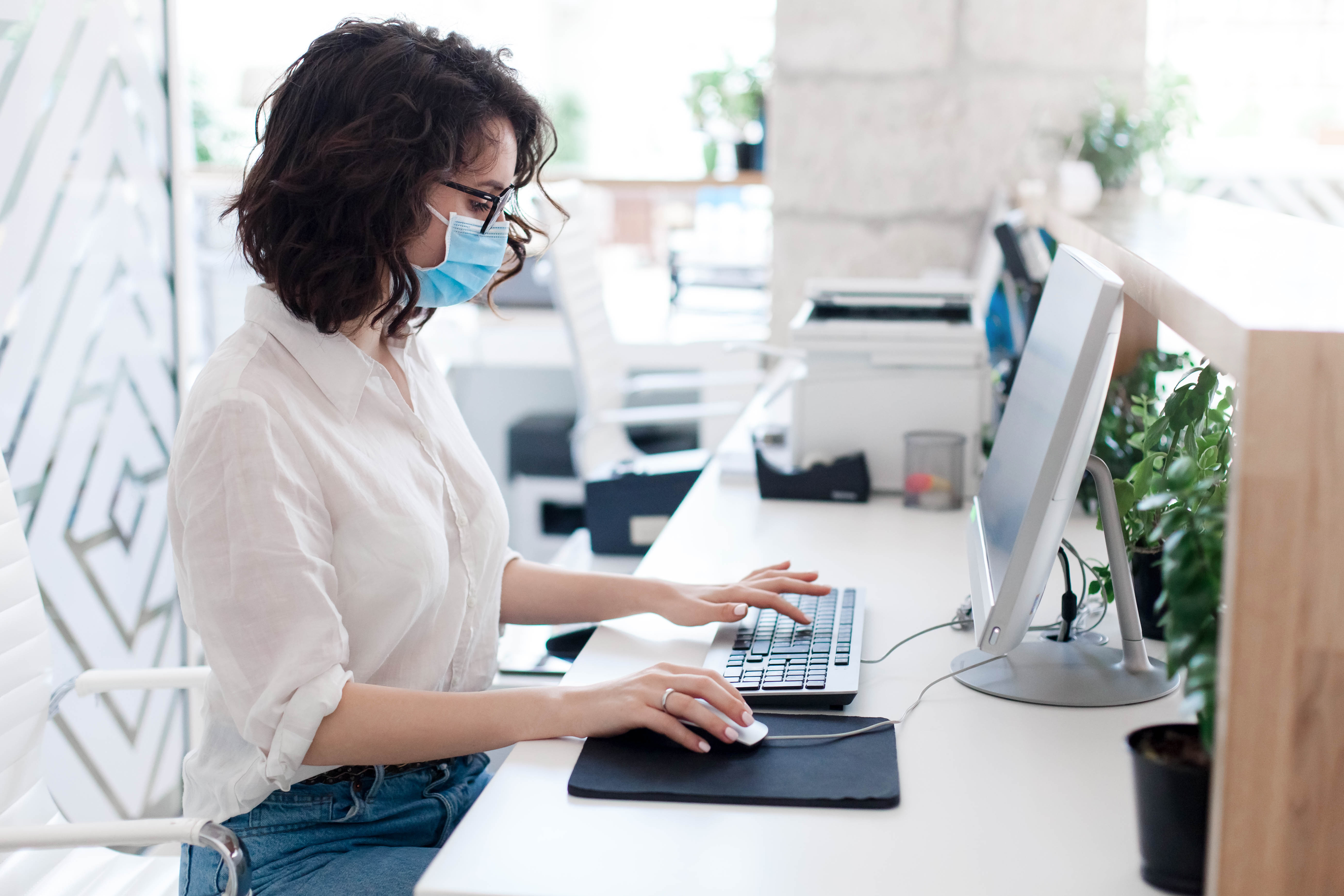The Evolution of Safety In The Workplace
EALgreen
Environmental, Health & Safety (EHS) became the number one workplace priority in 2020 because of the pandemic. Supply chains became essential as the virus took its toll and exposed gaps in practices and procedures for businesses worldwide. Organizations had to respond quickly and adopt new management protocols to provide a COVID-safe and healthy environment for their customers and teams. Those in supply chain roles at fulfillment centers, drivers, and even support personnel who started working remotely had to pivot. Businesses moving products were declared “essential,” which meant they had a duty to meet an immediate and critical need to keep up with the increased demand for supplies. All up and down the supply chain, organizations also had to improve the health and safety measures to keep their teams safe. Each industry has had to face a new reality of doing business by providing remote work opportunities, creating social distancing guidelines, and managing staff. Health and safety standards moving forward will play a significant role in employee retention and avoid any business disruptions.
Three sectors have been impacted most significantly. These include health care, education, and brick and mortar retail businesses. The health care sector, which represents 18% of our GDP, saw the most pronounced impact. Overworked healthcare workers, strained hospital capacity, short supplies of personal protective equipment (PPE), and a potential vaccine distribution are some of their challenges. From pre-K2 through college, education suffered a socially disruptive blow as nearly 51 million elementary school students and 19 million college-bound youth prioritized safety over in-person learning. Schools, universities, and parents felt the impact as many had to take an increased role in their children’s day-to-day education. For brick and mortar retail operations, including many restaurants, neighborhood retail, entertainment outlets, and small businesses, the pandemic proved fatal. Soon after the pandemic started rolling in from the East and West coasts inward to the middle of the country, up to 43% of these businesses had to suspend operations or shut down. It is expected that 1/3 of non-profit organizations in 2021 will lack the funding to continue to operate.
 EALGreen donated PPE Equipment to a hospital for its first responders.
EALGreen donated PPE Equipment to a hospital for its first responders.
On September 29, 2020, the National Safety Council (NSC) released its State of the Response study. This comprehensive survey showed that only 5% of states in the nation were “on track” for effectively managing testing, contact tracing, PPE/supply chain, and mental health issues related to COVID. The bulk of the responsibility of this public health crisis has fallen heavily on businesses as employers and leaders in their communities.
Businesses were challenged and had to move quickly, making significant investments in health and safety. These risks became the dominant priority in all aspects of their operations in 2020. This trend is unlikely to subside as government agencies do not have a unified plan for managing the situation. Health care experts and the Boston Consulting Group forecast that the new emphasis on health in the workplace – physical, environmental, and mental, will remain a critical operational focus well into 2022.

Risk management during COVID not only became a priority for businesses, individuals, and communities but a matter of survival. With a patchwork of policies, enforcement initiatives, and emerging technologies, companies and government agencies quickly developed their protocols based on resources and capacity. Health and hygiene requirements were implemented following CDC guidelines that included temperature checks, hand washing, and face coverings as critical safety measures. Safety guidelines for accident prevention and operational safety training had to be enhanced to include pandemic protocols. This combination of factors resulted in a robust commitment to environmental, health, and safety policies for businesses looking to protect their customers and employees’ well-being.
An estimated 68% of employers are planning to increase the use of employee assistance programs in 2021. And 52% of companies plan a top-down increase in safety and health focus in the months to come.
COVID forced a radical shift in the workforce that left many out of work, collapsed the gig employment workforce, and created a sharp increase in working remotely when possible. This trend will continue as organizations demonstrate their agility and build business models around consumer demand and an adaptable workforce. According to Gartner, the coronavirus pandemic will have a lasting impact on the future of work in several key ways. On the list is the expanded employer role as a social safety net. What does this mean for employers? It means that they will be required to develop their thinking around EHS to ensure they are making accommodations for employees who are more susceptible to mental challenges or need additional support. Businesses are working to promote a healthy balance through increased communication, time off, purpose-driven activities, and fostering a sense of well-being as part of the new work environment. Consumers are more immediately aware of actions taken – or not by brands to safeguard their workforce’s lives, especially those in the frontlines of fighting this virus. We know that brands want to be recognized as responsible and sustainable. Highly reputable companies will be screened by current and potential employees for health and safety protocols as a decision-making tool.
 The good news is that research shows that productivity has not suffered because of COVID. Ninety-four percent of 800 employers surveyed by Mercer said productivity was the same or higher than before the pandemic, even with their employees working remotely. Besides, the lightspeed of advances in technology regarding EHS monitoring, from contact tracing to thermo scanners, from apps that track gatherings and movements of employees in a warehouse to facial recognition, will accelerate the adoption of innovative solutions in the EHS field. It will also cause health and safety initiatives to further spill into other risk management areas, including privacy and human resources.
The good news is that research shows that productivity has not suffered because of COVID. Ninety-four percent of 800 employers surveyed by Mercer said productivity was the same or higher than before the pandemic, even with their employees working remotely. Besides, the lightspeed of advances in technology regarding EHS monitoring, from contact tracing to thermo scanners, from apps that track gatherings and movements of employees in a warehouse to facial recognition, will accelerate the adoption of innovative solutions in the EHS field. It will also cause health and safety initiatives to further spill into other risk management areas, including privacy and human resources.
In some ways, COVID is described as the portal through which civilization has entered a new era. As employers, we must remain committed to a new form of risk management. A robust, comprehensive EHS plan of attack against this virus and future ones will be the most potent antidote we can offer our most valuable assets: our employees, our customers, and our community.
To learn more about EALGreen, visit: www.ealgreen.org
Sources:

Antonio Rivera is a 25 year executive with a management degree in supply chain and operations management from Franklin University. Before joining EALgreen in 2019, he started several businesses and worked for fortune 100 companies.